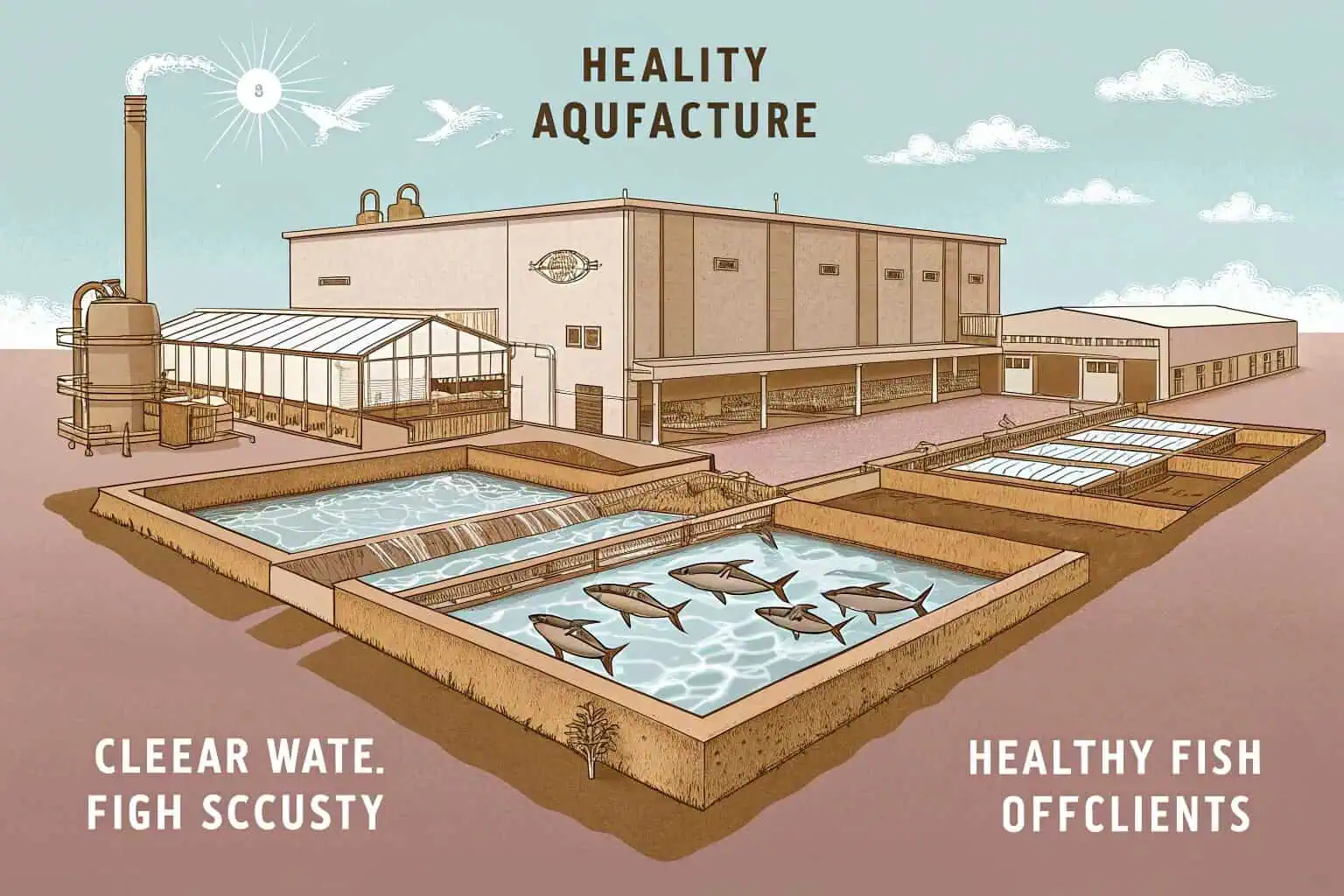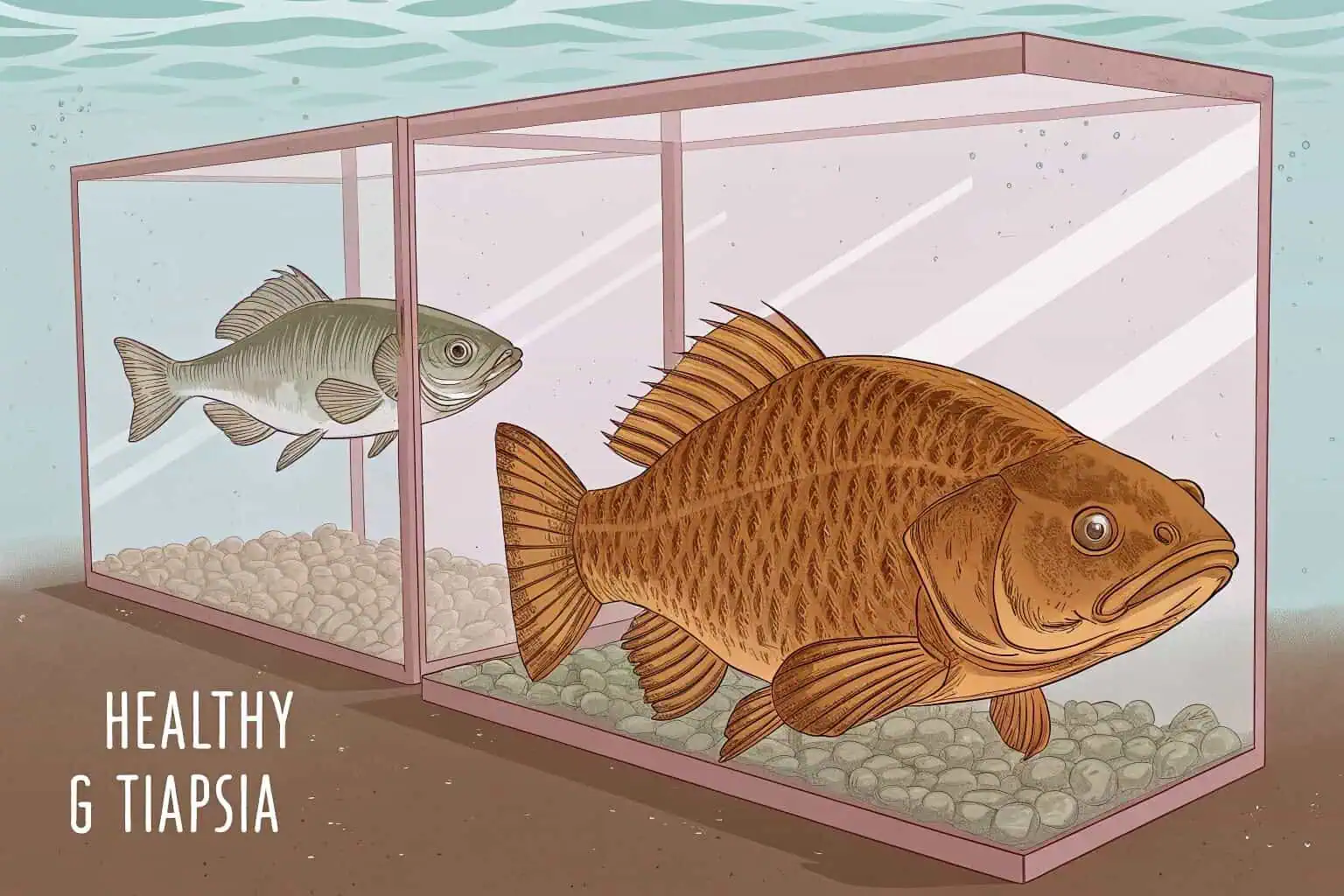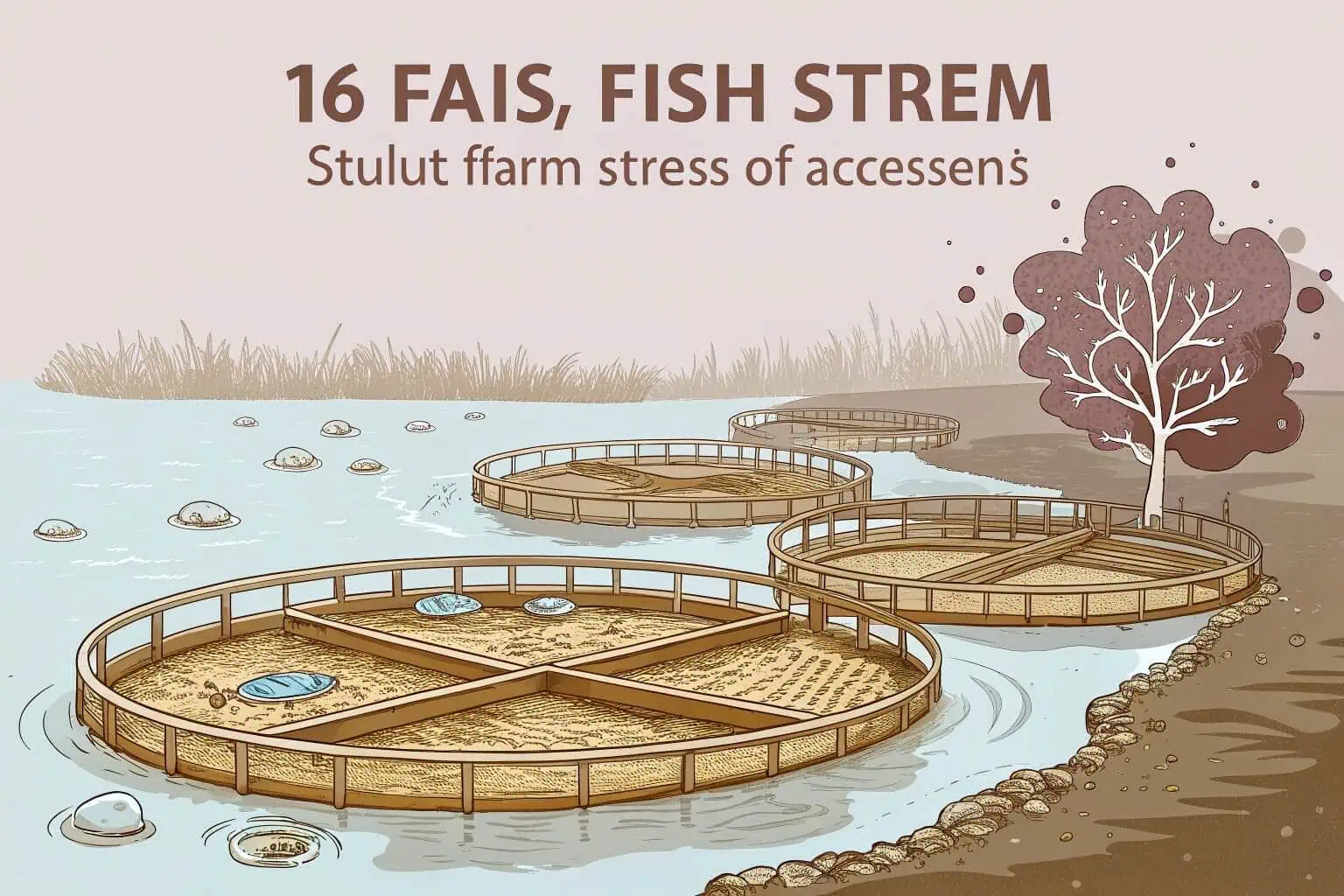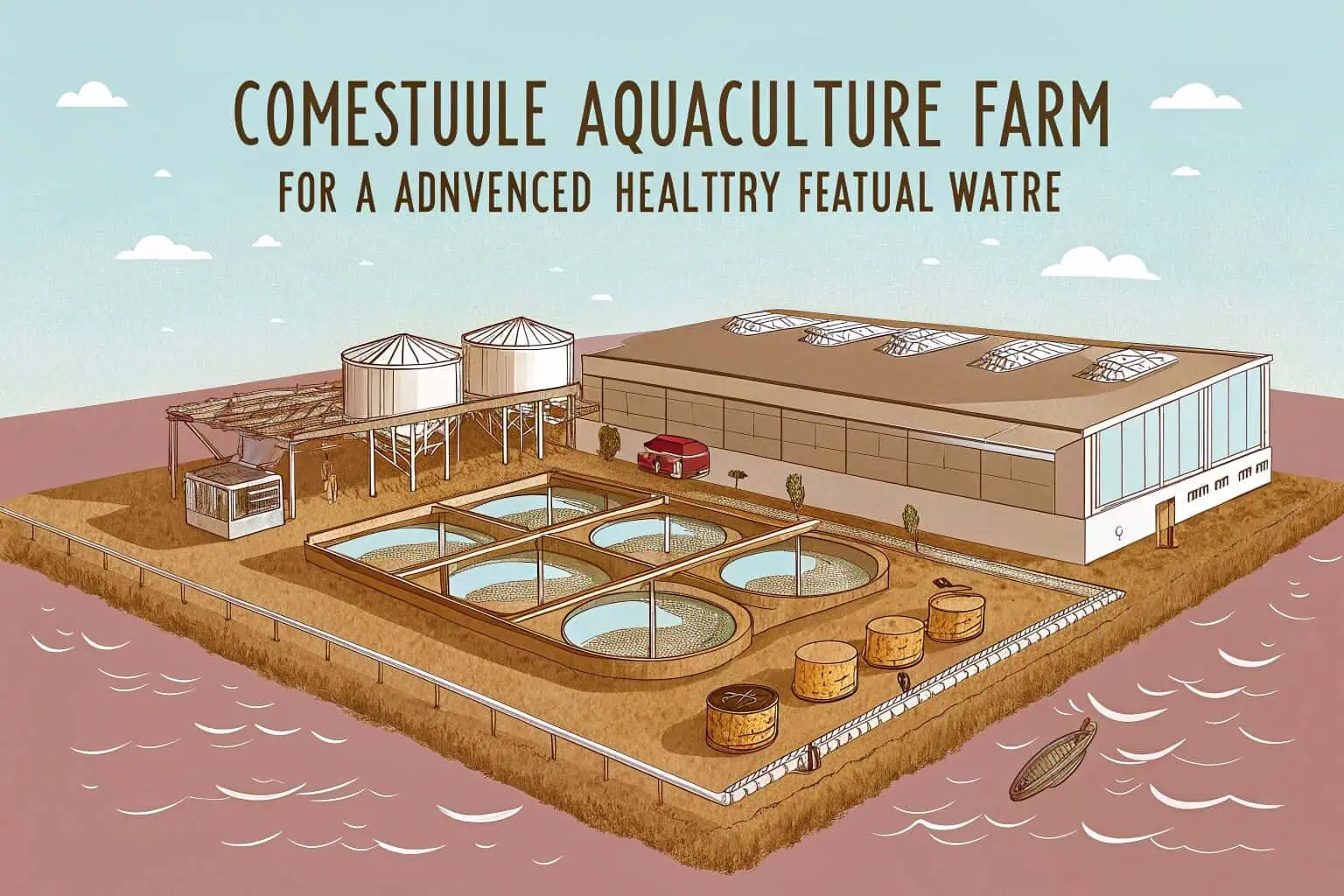Is owning a fish farm profitable?
Are you tired of unpredictable markets and low returns in traditional agriculture? Fish farming offers a compelling alternative, promising significant profits if done right.
Yes, owning a fish farm can be highly profitable, especially with species like tilapia and catfish due to their rapid growth and stable market demand. I've seen well-managed 10,000-capacity farms achieve 2-4x investment returns, yielding annual profits of tens of thousands of dollars.

My journey into aquaculture has shown me that while the waters of fish farming can be deep and challenging, they also hold currents of immense opportunity. It's a field where careful planning and continuous innovation are not just buzzwords, but essential tools for success. I've witnessed firsthand how the right approach can transform a simple pond into a thriving enterprise, but also how missteps can lead to significant setbacks. So, let's dive deeper into what makes a fish farm truly profitable and what pitfalls to avoid.
Which fish farming is most profitable?
Struggling to decide which fish species will bring you the best returns? Choosing the right fish is crucial for maximizing your aquaculture profits.
From my experience, tilapia and catfish are consistently the most profitable fish to farm. They grow quickly, resist disease well, and have strong, stable market demand, making them ideal for both small and large-scale operations.

When I look at the aquaculture landscape, tilapia1 and catfish always stand out. These species are like the workhorses of fish farming. They reach market size fast, which means quicker turnover and better cash flow for farmers. I've seen how their natural resilience to common diseases significantly reduces risks and treatment costs, a huge plus for any operation. Plus, the global demand for both tilapia and catfish remains robust, ensuring a ready market for your harvest. This stability is key. It allows farmers to plan their production cycles with confidence. For example, in a 10,000-capacity farm, optimizing feed conversion ratios and maintaining pristine water quality can lead to impressive investment returns. It's not just about growing fish; it's about growing them efficiently and sustainably.
Why Tilapia and Catfish Lead the Pack?
| Feature | Tilapia | Catfish |
|---|---|---|
| Growth Rate2 | Very fast, reaches market size quickly | Fast, efficient feed conversion |
| Disease Resist | High, reduces mortality and treatment costs | High, robust and adaptable |
| Market Demand3 | Stable, global demand for white meat fish | Strong, popular in many cuisines |
| Adaptability | Tolerates various water conditions | Hardy, thrives in diverse environments |
Maximizing Profitability
To truly maximize profitability, I always advise focusing on these aspects:
- Feed Optimization4: High-quality feed directly impacts growth and feed conversion.
- Water Quality Management5: Consistent monitoring prevents disease and promotes healthy growth.
- Market Access: Secure reliable buyers before harvest to ensure quick sales.
What are the downsides of fish farming?
Worried about the hidden risks in fish farming? While profitable, this industry has significant challenges that demand careful consideration.
The biggest downsides I've observed in fish farming are disease outbreaks, which can wipe out entire stocks, and environmental concerns like water pollution. High initial investment and the need for constant monitoring also pose challenges for new farmers.

I've seen the devastating impact of disease outbreaks firsthand. One moment, a farm is thriving, and the next, a virus spreads rapidly through high-density tanks, leading to complete stock loss. This is a constant threat, and it underscores the importance of strict biosecurity measures6. Beyond disease, environmental concerns weigh heavily on my mind. Water pollution from waste and uneaten feed can harm local ecosystems, and the potential for farmed fish to escape and impact wild populations is a real worry. These issues are not just ethical considerations; they can lead to regulatory fines and damage a farm's reputation. The initial setup costs for a modern fish farm, including tanks, filtration systems, and feed, are also substantial. This requires a significant upfront investment, and the ongoing need for vigilant monitoring of water parameters, fish health, and equipment adds to the operational complexity.
Key Challenges in Fish Farming
| Challenge | Description | Impact on Farm |
|---|---|---|
| Disease Outbreaks7 | Rapid spread of pathogens in high-density environments | Mass mortality, significant financial losses, operational disruption |
| Environmental Impact8 | Water pollution from waste, potential escape of farmed fish | Regulatory fines, ecosystem damage, negative public perception |
| High Initial Investment | Significant capital required for infrastructure, equipment, and stock | Barrier to entry, increased financial risk |
| Operational Complexity | Constant monitoring of water quality, feed, and fish health | Requires skilled labor, continuous management, potential for human error |
Mitigating Risks
To navigate these challenges, I always emphasize:
- Biosecurity Protocols9: Implement strict measures to prevent disease introduction and spread.
- Sustainable Practices10: Invest in advanced filtration and waste management systems.
- Contingency Planning: Have emergency plans for disease outbreaks or equipment failures.
How much do fish farmers make a year?
Curious about the financial rewards of fish farming? The income can vary widely, but I've seen impressive earnings for those who master the trade.
New fish farmers typically earn $40,000-$60,000 annually. However, experienced operators with larger systems and strong market access can easily exceed $100,000, with some in Asian or African markets achieving even higher incomes.

The income potential in fish farming is a spectrum, not a single figure. For those just starting, perhaps with a smaller setup or still learning the ropes, an annual income of $40,000 to $60,000 is a realistic expectation. This covers basic operational costs and provides a decent living. However, I've seen how experience and scale dramatically shift these numbers. Farmers who have honed their skills, invested in larger, more efficient systems, and built strong relationships with buyers can easily push their earnings past $100,000 a year. In some rapidly developing aquaculture markets, particularly in Asia and Africa, where demand is soaring and production costs can be lower, I've observed even higher figures. It's not just about the volume of fish, but also about the efficiency of production, the quality of the product, and the ability to tap into premium markets.
Factors Influencing Farmer Income
| Factor | Description | Impact on Income |
|---|---|---|
| Experience Level | Novice vs. seasoned farmer with proven track record | Higher experience often correlates with higher efficiency11 and profitability |
| Farm Scale12 | Small-scale backyard operations vs. large commercial farms | Larger scale generally allows for economies of scale and higher output |
| Species Choice13 | High-value species vs. commodity fish | Premium species can command higher prices and better margins |
| Market Access14 | Direct sales to consumers vs. wholesale to distributors | Direct sales often yield higher profits per unit |
| Efficiency | Optimized feed conversion, low mortality rates, efficient resource use | Reduces costs and increases net profit |
Boosting Your Earnings
To increase annual income, I recommend:
- Specialization: Focus on high-demand or niche species.
- Value-Added Products15: Process fish into fillets or smoked products.
- Direct Marketing: Sell directly to restaurants or consumers.
Is fish farming worth it?
Wondering if fish farming is a wise investment for your future? It's a challenging path, but the rewards can be substantial for the right entrepreneur.
Yes, I believe fish farming is worth it, especially for those with an agricultural background. It addresses global protein needs and creates jobs. Success hinges on thorough market research, using advanced equipment like durable fish tanks, and committing to sustainable practices.

From my vantage point, fish farming16 is absolutely worth the investment, particularly for individuals with a solid agricultural background. It's more than just a business; it's a vital contributor to global food security, helping to meet the ever-growing demand for protein. The industry also creates numerous employment opportunities, from farmhands to processing specialists. However, this isn't a venture for the faint of heart. Success, as I've observed, is built on a foundation of meticulous market research. Understanding local demand, pricing, and competition is paramount. Investing in advanced equipment, such as our durable galvanized pipe or sheet fish tanks, is not an expense but a strategic move to mitigate risks and enhance efficiency. These tanks, unlike simpler setups, offer corrosion resistance and stability, crucial for long-term operations. Crucially, a commitment to sustainable practices is non-negotiable. Ignoring environmental responsibility can lead to long-term reputational damage and increased operational costs. Without these elements, fish farming can quickly become a high-risk gamble rather than a stable livelihood.
The Value Proposition of Fish Farming
| Aspect | Benefit | Requirement for Success |
|---|---|---|
| Global Food Security17 | Addresses increasing demand for protein worldwide | Efficient production, sustainable practices |
| Economic Opportunity | Creates jobs, supports local economies | Business acumen, market understanding |
| Innovation Potential18 | Room for technological advancements and new farming methods | Adaptability, willingness to invest in R&D |
| Customization | Ability to tailor production to specific market needs (Bancy's strength) | Strong client communication, flexible manufacturing |
Making it Worthwhile
To ensure fish farming is a worthwhile endeavor, I always advise:
- Market Research19: Understand your target market and demand.
- Quality Equipment: Invest in durable and efficient systems like Bancy's tanks.
- Sustainability20: Prioritize eco-friendly practices to ensure long-term viability.
Conclusion
Fish farming offers significant profit potential, especially with species like tilapia and catfish. While challenges like disease and environmental impact exist, careful planning, advanced equipment, and sustainable practices make it a rewarding and vital industry.
-
Explore the advantages of tilapia in aquaculture, including its fast growth and resilience, which can enhance your farming success. ↩
-
Understanding the growth rates can help you choose the best fish for aquaculture. ↩
-
Exploring market demand can guide your investment decisions in fish farming. ↩
-
Exploring this link will provide you with essential strategies to enhance feed quality and boost profitability. ↩
-
This resource will help you understand the critical role of water quality in promoting healthy livestock and preventing diseases. ↩
-
Explore this resource to learn effective biosecurity practices that can prevent disease outbreaks and protect your farm. ↩
-
Explore this resource to learn effective strategies for preventing disease outbreaks and safeguarding your farm. ↩
-
Discover sustainable practices to reduce environmental damage and comply with regulations. ↩
-
Explore this link to learn effective biosecurity measures that can help prevent disease introduction and spread. ↩
-
Discover advanced sustainable practices that enhance filtration and waste management systems for better environmental health. ↩
-
Exploring this resource will provide practical tips to optimize farm operations and boost income. ↩
-
Explore this link to understand how larger farm operations can lead to higher profits through economies of scale. ↩
-
Learn about high-value fish species that can significantly boost your farm's profitability. ↩
-
Explore this link to learn how direct sales and market access strategies can significantly boost farm profitability. ↩
-
Learn the best techniques and market strategies for creating valuable fish products to boost your income. ↩
-
Explore this resource to learn proven strategies and tips for successful fish farming, ensuring a profitable and sustainable venture. ↩
-
Explore this resource to understand effective strategies for addressing the increasing demand for protein worldwide. ↩
-
Learn about the latest innovations and how they can revolutionize farming methods and boost productivity. ↩
-
Explore this resource to learn effective market research techniques that can help you identify demand and target your audience. ↩
-
Discover sustainable fish farming practices to ensure your operation is eco-friendly and viable in the long term. ↩